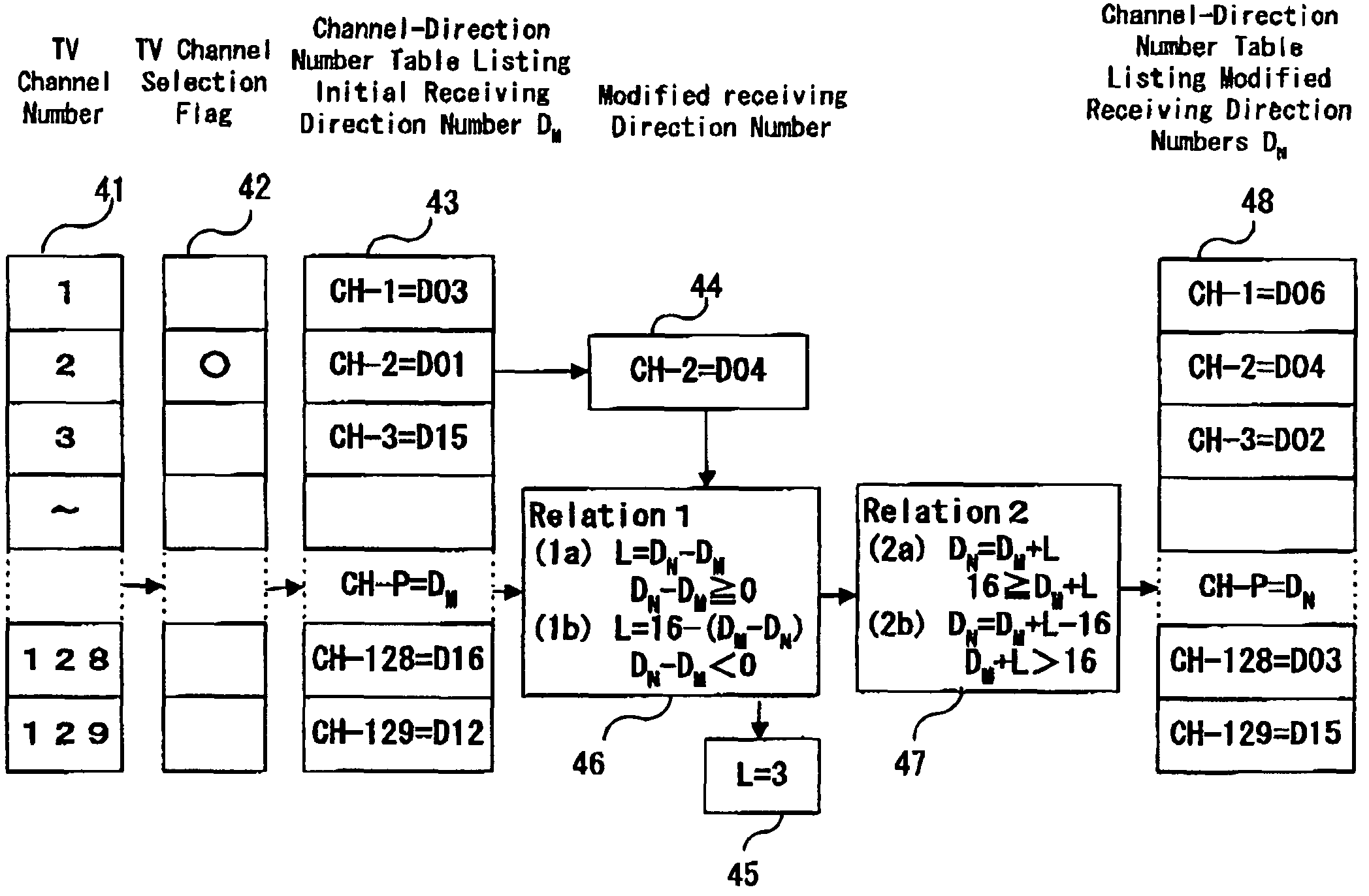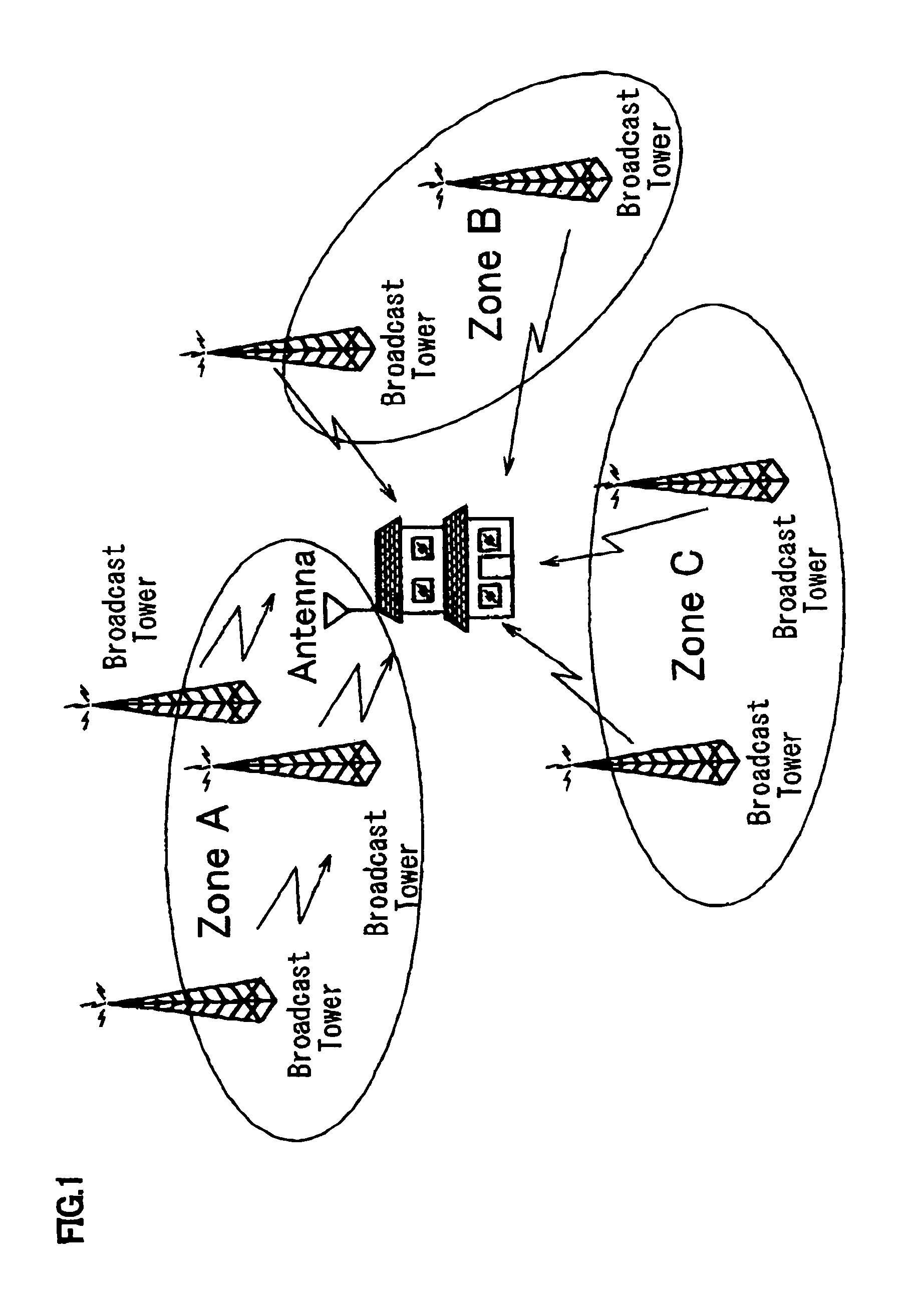Digital television broadcast signal receiver
a digital television and receiver technology, applied in the direction of polarisation/directional diversity, selective content distribution, television systems, etc., can solve the problems of broadcast stations going into bankruptcy, significant variation in the signal intensity of received tv broadcast signals, and unidirectional antennas of yagi antennas, so as to prevent unnecessary scanning rotation and reduce time and the effect of scans
- Summary
- Abstract
- Description
- Claims
- Application Information
AI Technical Summary
Benefits of technology
Problems solved by technology
Method used
Image
Examples
Embodiment Construction
[0025]The best modes and preferred embodiments of the present invention will be described hereinafter with reference to the annexed drawings. Note that the specific embodiments described are not intended to cover the entire scope of the present invention, and hence the present invention is not limited to only the specific embodiments.
[0026]A digital TV (Television) broadcast signal receiver according to an embodiment of the present invention will be described. FIG. 1 is a schematic view showing a situation in which a digital TV broadcast signal receiver, installed in a home of a user, such as a digital TV broadcast signal receiver 1 shown in later described FIG. 2 receives digital TV broadcast signals from broadcast towers located in various zones. Generally, if a digital TV broadcast signal receiver receives digital TV broadcast signals of digital (terrestrial) TV broadcast which have a signal intensity equal to or higher than a predetermined threshold value, it is possible to obta...
PUM
 Login to View More
Login to View More Abstract
Description
Claims
Application Information
 Login to View More
Login to View More - R&D
- Intellectual Property
- Life Sciences
- Materials
- Tech Scout
- Unparalleled Data Quality
- Higher Quality Content
- 60% Fewer Hallucinations
Browse by: Latest US Patents, China's latest patents, Technical Efficacy Thesaurus, Application Domain, Technology Topic, Popular Technical Reports.
© 2025 PatSnap. All rights reserved.Legal|Privacy policy|Modern Slavery Act Transparency Statement|Sitemap|About US| Contact US: help@patsnap.com



